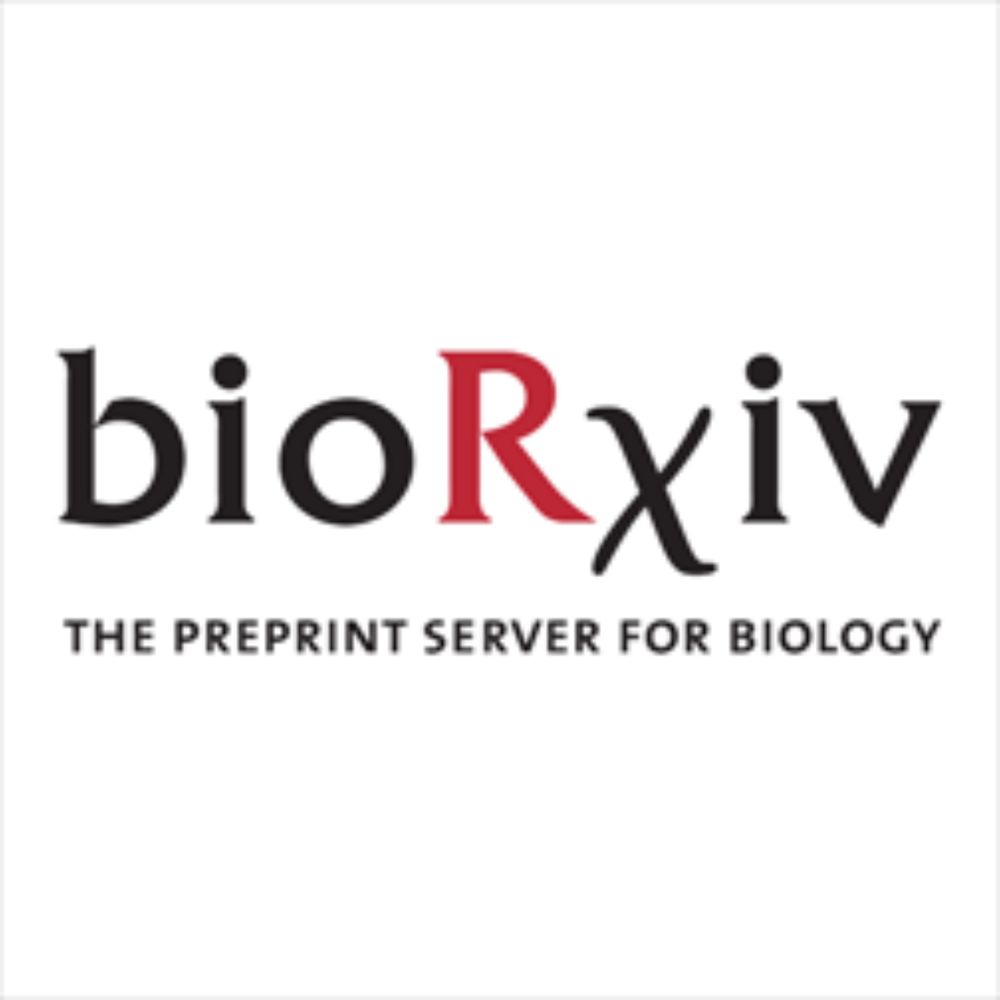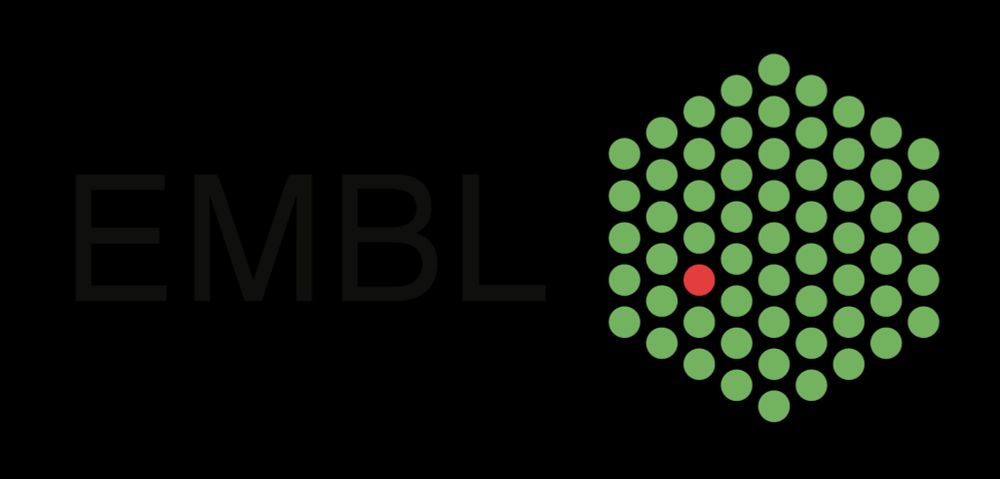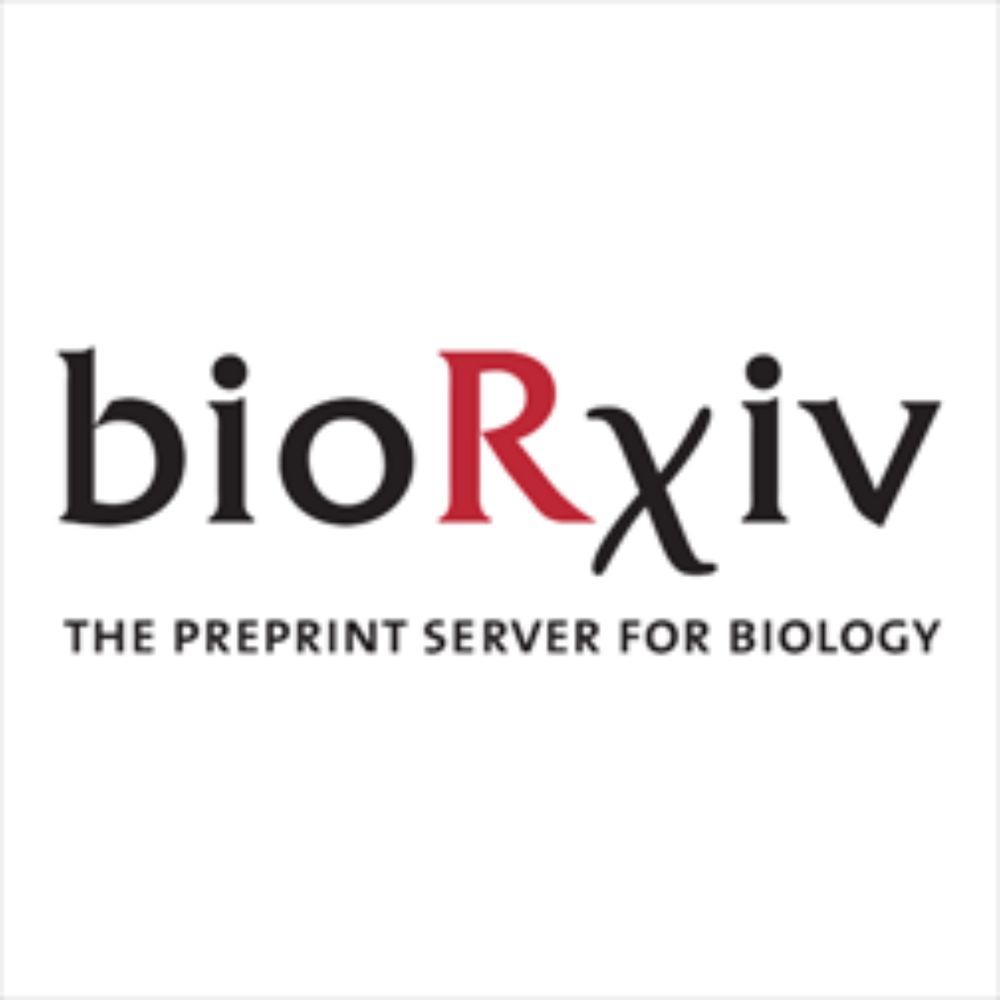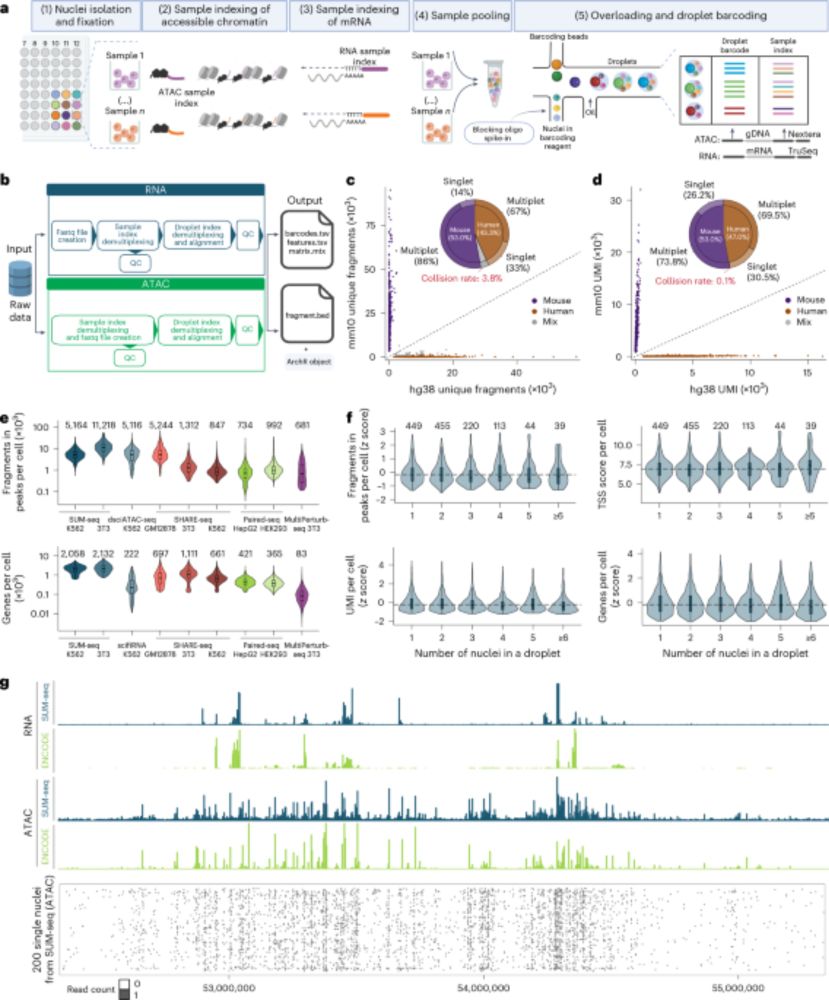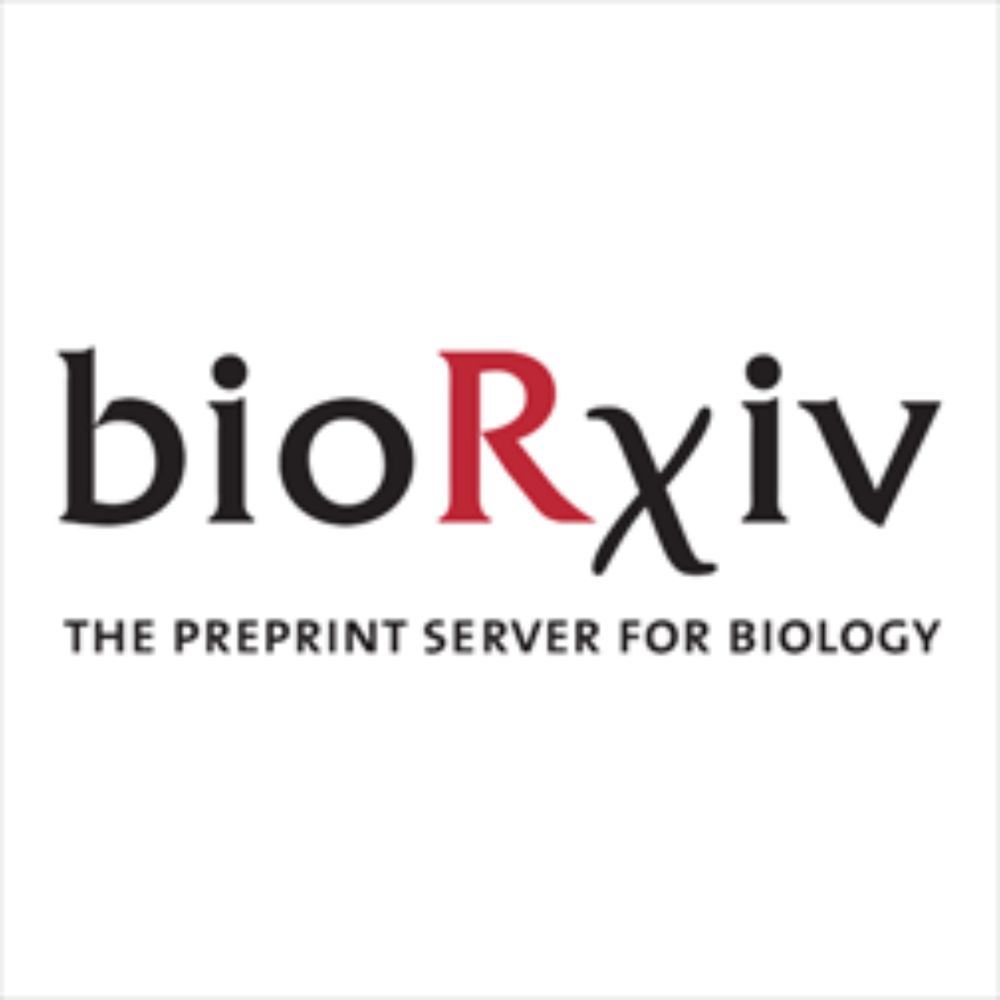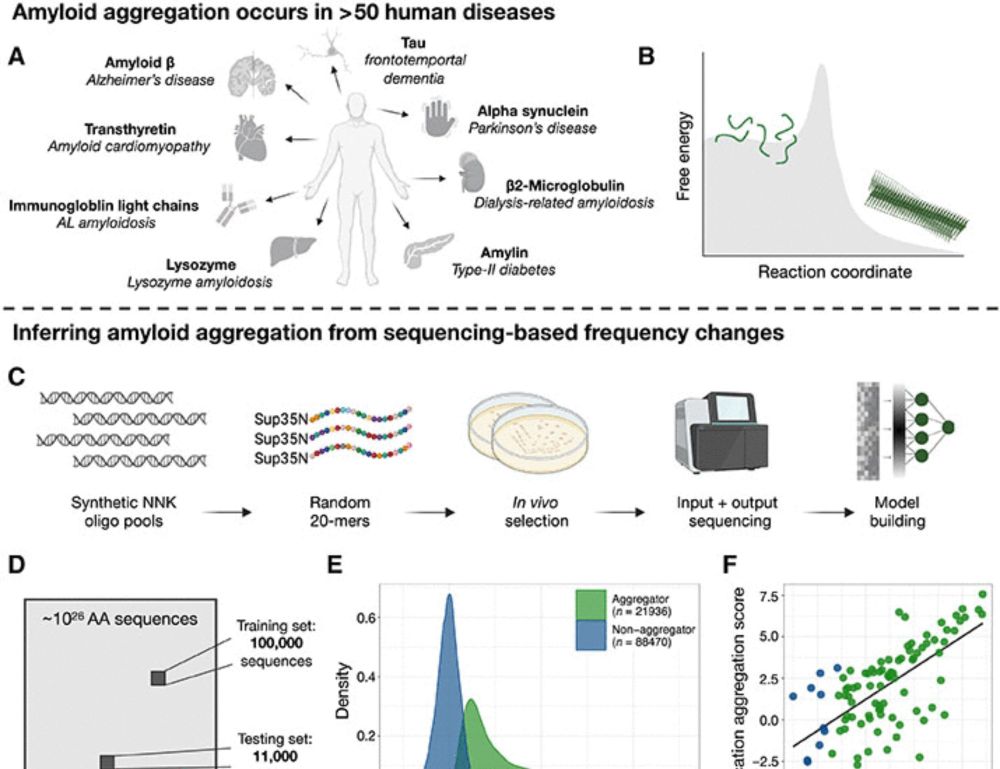SOOOO MANY GENOMICS MODELSSSS! 😱 Often unclear which is best since they benchmark differently! In this preprint, we introduce GAME, a new framework that utilizes APIs to enable sustainable, uniform model evaluation so we can see which is actually best for each task. doi.org/10.1101/2025...
11.07.2025 07:33 — 👍 20 🔁 9 💬 1 📌 1
Decoding cnidarian cell type gene regulation
Animal cell types are defined by differential access to genomic information, a process orchestrated by the combinatorial activity of transcription factors that bind to cis -regulatory elements (CREs) to control gene expression. However, the regulatory logic and specific gene networks that define cell identities remain poorly resolved across the animal tree of life. As early-branching metazoans, cnidarians can offer insights into the early evolution of cell type-specific genome regulation. Here, we profiled chromatin accessibility in 60,000 cells from whole adults and gastrula-stage embryos of the sea anemone Nematostella vectensis. We identified 112,728 CREs and quantified their activity across cell types, revealing pervasive combinatorial enhancer usage and distinct promoter architectures. To decode the underlying regulatory grammar, we trained sequence-based models predicting CRE accessibility and used these models to infer ontogenetic relationships among cell types. By integrating sequence motifs, transcription factor expression, and CRE accessibility, we systematically reconstructed the gene regulatory networks that define cnidarian cell types. Our results reveal the regulatory complexity underlying cell differentiation in a morphologically simple animal and highlight conserved principles in animal gene regulation. This work provides a foundation for comparative regulatory genomics to understand the evolutionary emergence of animal cell type diversity. ### Competing Interest Statement The authors have declared no competing interest. European Research Council, https://ror.org/0472cxd90, ERC-StG 851647 Ministerio de Ciencia e Innovación, https://ror.org/05r0vyz12, PID2021-124757NB-I00, FPI Severo Ochoa PhD fellowship European Union, https://ror.org/019w4f821, Marie Skłodowska-Curie INTREPiD co-fund agreement 75442, Marie Skłodowska-Curie grant agreement 101031767
I am very happy to have posted my first bioRxiv preprint. A long time in the making - and still adding a few final touches to it - but we're excited to finally have it out there in the wild:
www.biorxiv.org/content/10.1...
Read below for a few highlights...
06.07.2025 18:14 — 👍 58 🔁 24 💬 1 📌 2
Excited to launch our AlphaGenome API goo.gle/3ZPUeFX along with the preprint goo.gle/45AkUyc describing and evaluating our latest DNA sequence model powering the API. Looking forward to seeing how scientists use it! @googledeepmind
25.06.2025 14:29 — 👍 217 🔁 82 💬 5 📌 10
This a really exciting leap forward for genomic sequence to activity gene regulation models. It is a genuine improvement over pretty much all SOTA models spanning a wide range of regulatory, transcriptional and post-transcriptional processes. 1/
25.06.2025 16:18 — 👍 71 🔁 20 💬 2 📌 2
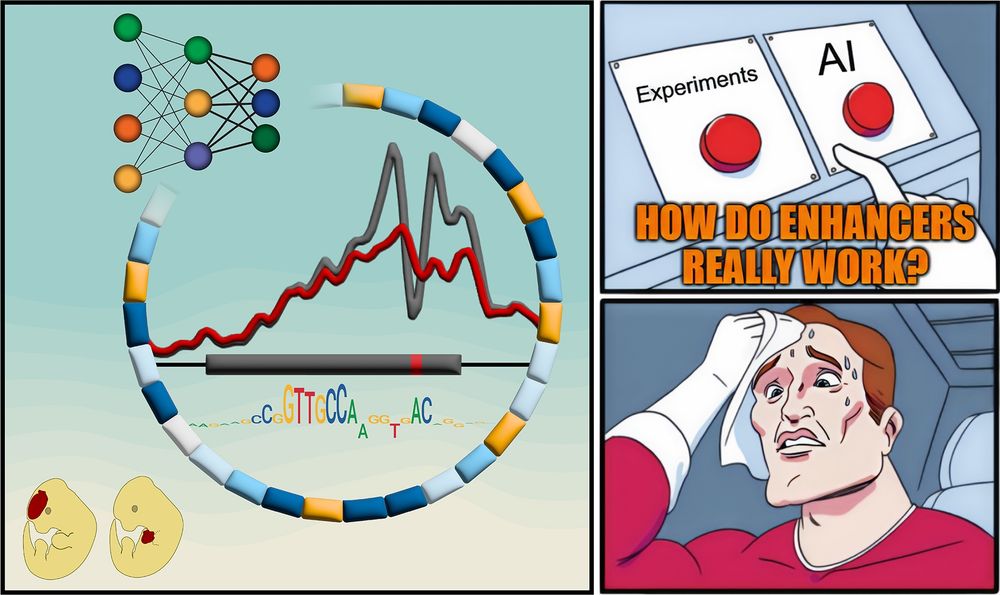
A meme-style comic panel with three parts. Left: A stylized enhancer with a mutation, surrounded by colored blocks representing functional motifs, a neural network diagram, chromatin accessibility signal traces, and a sequence motif. Two cartoon mouse embryos below show different LacZ reporter activity patterns. Top right: A hand hovers anxiously between two red buttons labeled “Experiments” and “AI,” with the caption “HOW DO ENHANCERS REALLY WORK?” Bottom right: A sweating superhero wipes his forehead, looking stressed about the difficult choice.
Textbooks: “Enhancers are just a bunch of TFBSs”
But how do they REALLY work?
New paper with many contributors here @berkeleylab.lbl.gov, @anshulkundaje.bsky.social, @anusri.bsky.social
A 🧵 (1/n)
Free access link: rdcu.be/erD22
18.06.2025 17:55 — 👍 161 🔁 77 💬 2 📌 5
The deadline for the VIB.AI group leader positions is approaching - send in your CV and short research plan before 14th June to start your BioML research lab in Leuven or Ghent
04.06.2025 07:16 — 👍 9 🔁 10 💬 0 📌 0
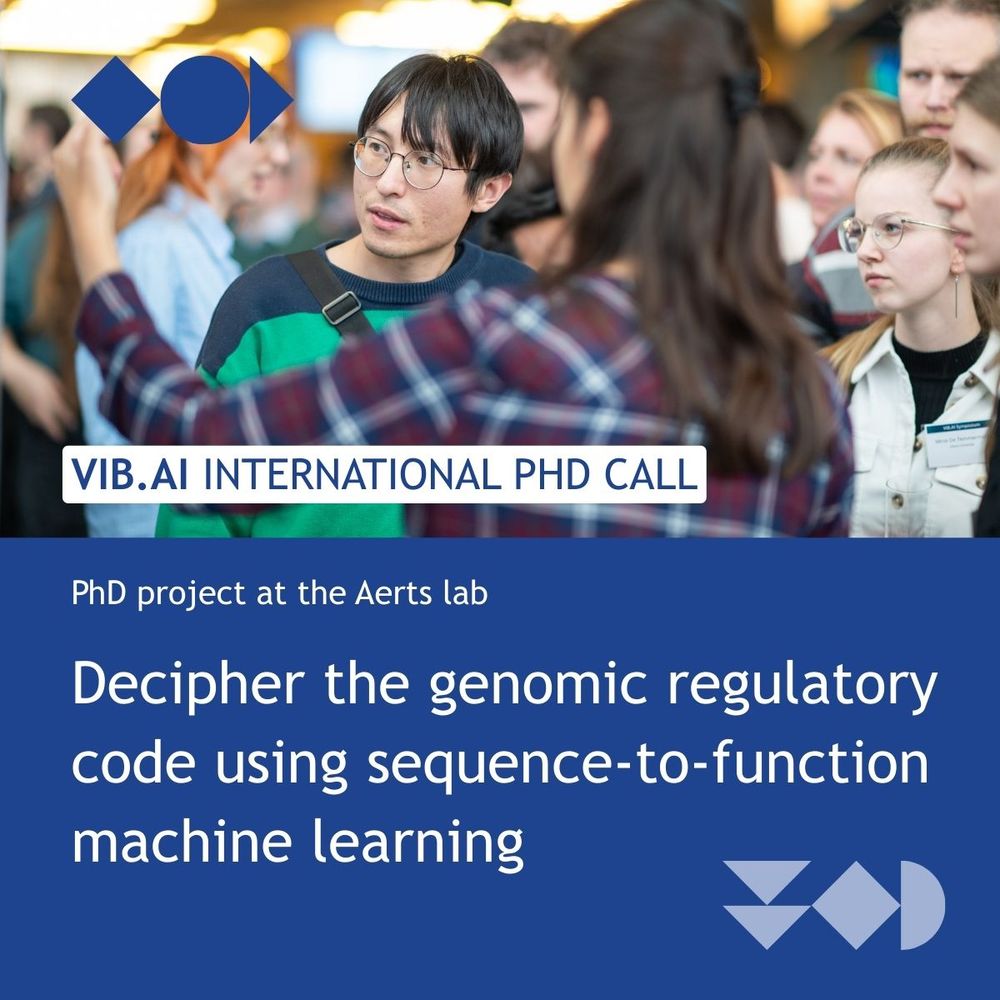
Join the @steinaerts.bsky.social Lab via the VIB.AI International PhD Call 2025!
Use ML to decode how DNA sequences control gene activity.
Work with single-cell & spatial genomics, deep learning models, and CRISPR validation.
📍 Leuven
🗓️ Apply by June 22nd → https://tinyurl.com/53nc9vnd
27.05.2025 09:57 — 👍 6 🔁 3 💬 0 📌 0
Computational Biologist (Single-cell Genomics / ML) – Single-cell Analytics Innovation LabChaligne Lab Website
The Single-cell Analytics Innovation Lab
@mskcancercenter.bsky.social is expanding and looking for ML-oriented computational biologists. Join our team based in NYC to work on cutting-edge single-cell & spatial transcriptomics methods in collaboration with leading research labs. bit.ly/4lTEr2t
26.05.2025 15:13 — 👍 18 🔁 15 💬 0 📌 0
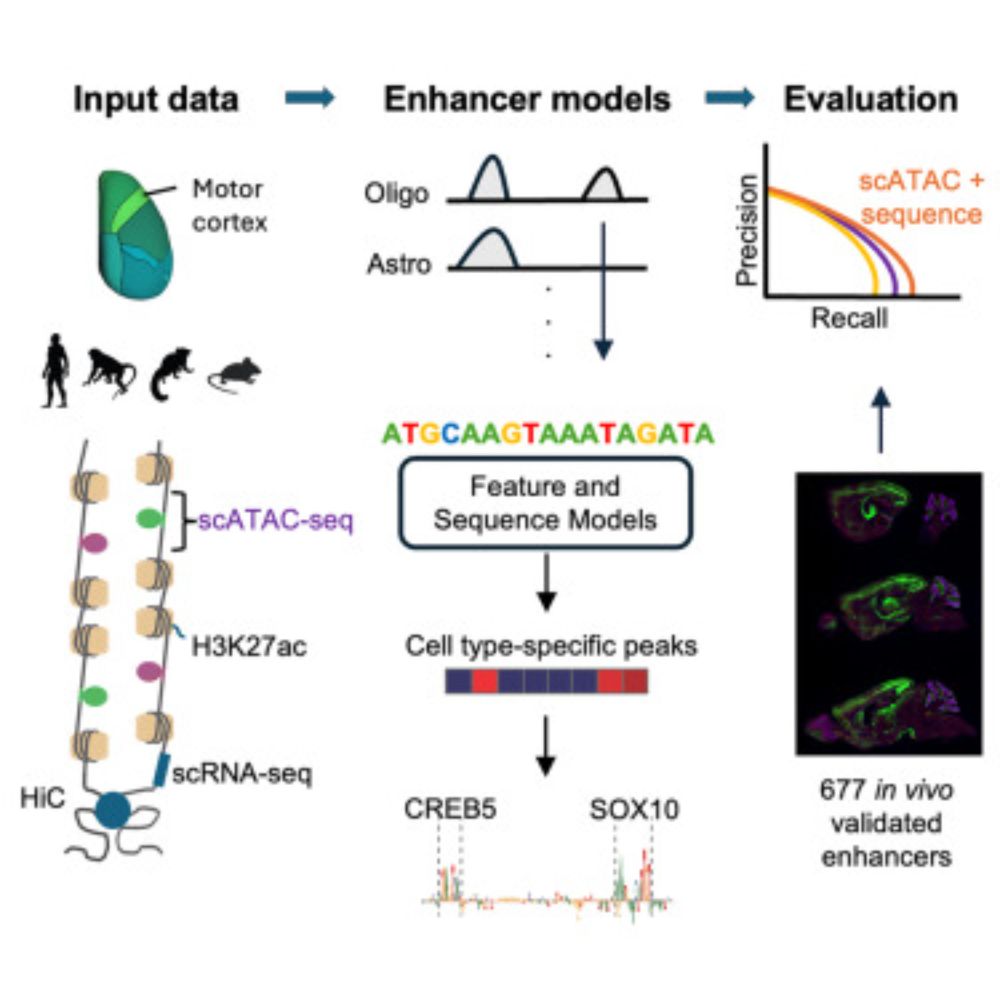
Evaluating methods for the prediction of cell-type-specific enhancers in the mammalian cortex
Johansen et al. report the results of a community challenge to predict functional
enhancers targeting specific brain cell types. By comparing multi-omics machine learning
approaches using in vivo data...
Check out our work on evaluating methods for predicting in vivo cell enhancer activity in the mouse cortex! Combined, scATAC peak specificity and sequence-based CREsted predictions gave the best predictive performance, aiming to advance genetic tool design for cell targeting in the brain.
21.05.2025 16:45 — 👍 20 🔁 10 💬 1 📌 0
One thousand candidate enhancers tested in vivo in the mouse brain! A massive resource and oh so useful as validation set for genome-wide enhancer prediction methods. Super fun to be involved in one of the papers: ‘the prediction challenge paper’ by Nelson&Niklas et al www.cell.com/cell-genomic...
21.05.2025 16:50 — 👍 40 🔁 13 💬 0 📌 0
In the battle against brain disease, researchers can now rely on a new arsenal of genetic tools – The Armamentarium.
Together with scientists from across the NIH BRAIN Initiative, we’ve created and published over 1000 new enhancer AAV vectors.
🧠📈
21.05.2025 15:58 — 👍 54 🔁 19 💬 3 📌 6

The premier conference on Machine Learning for Computational Biology is Sep 9-10 at the NY Genome Center in NYC!
Submission deadline is June 1 for 2-page abstracts and 8-page papers (eligible for proceedings track).
Registration is now open! (Link below)
Please retweet!
16.05.2025 11:26 — 👍 28 🔁 13 💬 2 📌 0
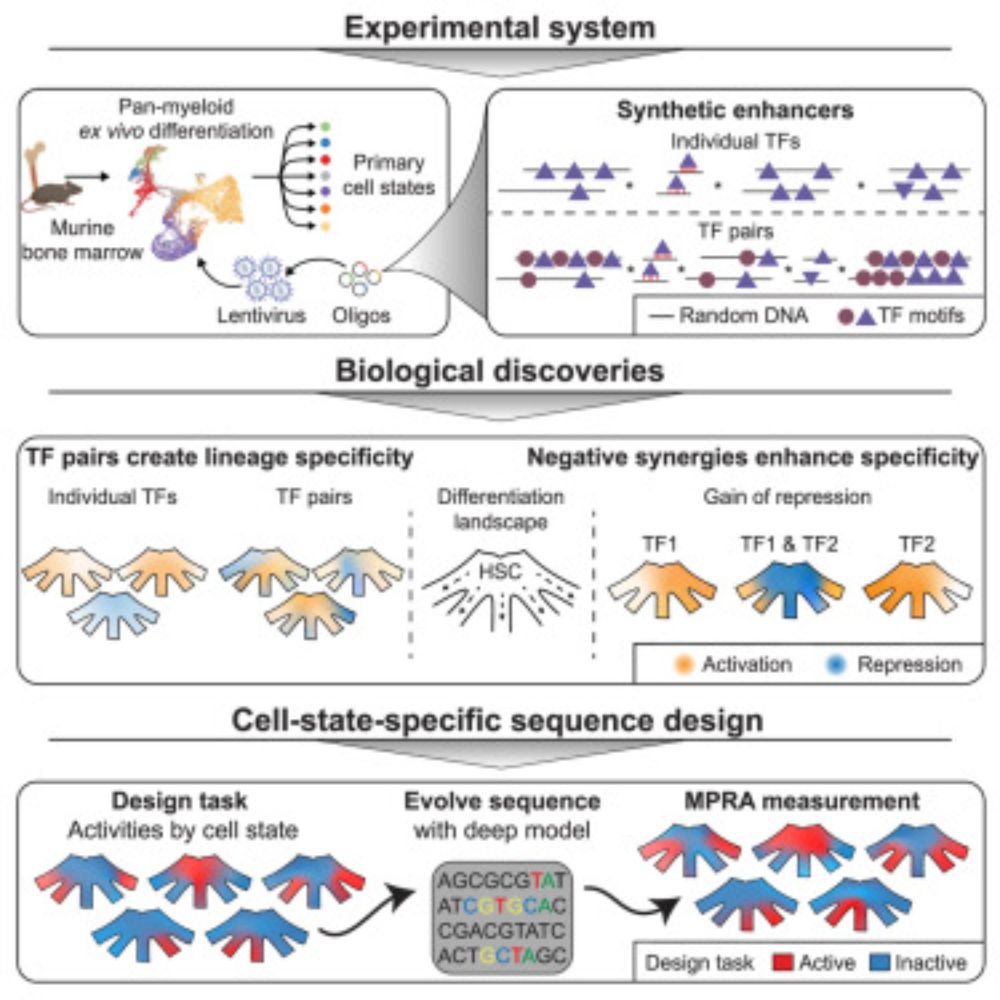
Design principles of cell-state-specific enhancers in hematopoiesis
Screen of minimalistic enhancers in blood progenitor cells demonstrates widespread
dual activator-repressor function of transcription factors (TFs) and enables the model-guided
design of cell-state-sp...
Out in Cell @cp-cell.bsky.social: Design principles of cell-state-specific enhancers in hematopoiesis
🧬🩸 screen of fully synthetic enhancers in blood progenitors
🤖 AI that creates new cell state specific enhancers
🔍 negative synergies between TFs lead to specificity!
www.cell.com/cell/fulltex...
🧵
08.05.2025 16:06 — 👍 136 🔁 57 💬 4 📌 8
Another exciting opportunity for all you AI+Bio researchers, this time in Belgium!
07.05.2025 11:22 — 👍 2 🔁 1 💬 0 📌 0

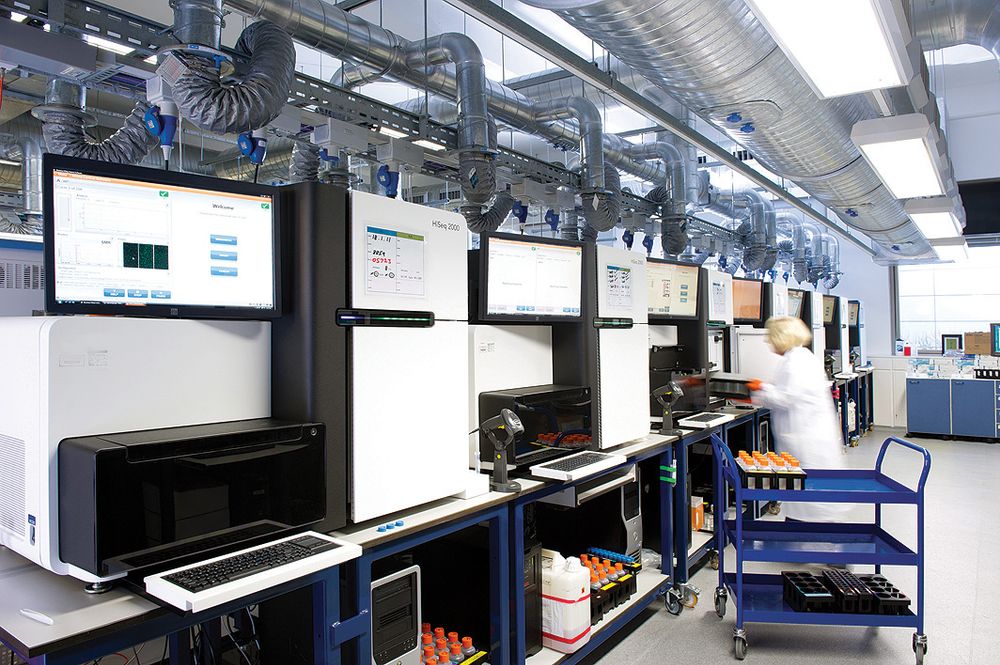
Come and join us! We’re hiring a new Group Leader in Generative Biology at the @sangerinstitute.bsky.social
Building AI models or the data to train them?
Core funding of >$130M a year for a faculty of ~30.
www.nature.com/naturecareer...
acrobat.adobe.com/id/urn:aaid:...
pls RT!
06.05.2025 14:59 — 👍 46 🔁 67 💬 1 📌 0
Join us for our next Kipoi Seminar with Laura Martens, Gagneur lab, TUM @lauradmartens.bsky.social @gagneurlab.bsky.social @tum.de
🐕scooby: Modeling multi-modal genomic profiles from DNA sequence at single-cell resolution
📅Wed May 7, 5:30pm CET
🧬https://kipoi.org/seminar/
🦋kipoizoo.bsky
02.05.2025 11:01 — 👍 10 🔁 6 💬 0 📌 1
"Science is an investment.
We will put forward a new 500 million package for 2025-2027 to support the best and the brightest researchers and scientists from Europe and around the world."
— President @vonderleyen.ec.europa.eu at the ‘Choose Europe for Science' event at La Sorbonne 🇫🇷
05.05.2025 10:16 — 👍 982 🔁 309 💬 35 📌 49
We're one month away from the short talk abstract and scholarship deadlines.
Short Talk Abstract Deadline: May 20th, 2025
Scholarship Deadline: May 20th, 2025
Early Registration Deadline: July 17th, 2025
Poster Abstract Deadline: August 21st, 2025
20.04.2025 18:16 — 👍 3 🔁 2 💬 0 📌 0
Cool positions for AI x biology in Belgium!
02.05.2025 19:18 — 👍 4 🔁 2 💬 0 📌 0
Our new call for VIB.AI group leaders is online! Junior and senior positions available to develop innovative ML methods in biology. With professorship at CS or Medical Faculty. Deadline 14th June. DM for more info.
26.04.2025 11:00 — 👍 32 🔁 21 💬 0 📌 2
Heads up: A ton of papers from my group at the Broad, Pittsburgh, Irvine, Caltech, Duke, Berkeley and especially the Allen are on deck for a big consortium publication on new methods to target range of specific neuronal and non-neuronal cells coming out in Neuron and associated journals May 20th!
02.05.2025 07:53 — 👍 49 🔁 4 💬 0 📌 0
🔥 Just published! Thrilled to share that our work on funkyheatmap has just been published in the Journal of Open Source Software 🎉
01.05.2025 14:20 — 👍 7 🔁 4 💬 1 📌 0
Neuroscientist @__NERF | @BiologyKULeuven | @VIBLifeSciences | @leuvenbrainins1. Opinions my own. https://bsky.app/profile/boninlab.bsky.social
Group Leader at EMBL-EBI. Our group uses interdisciplinary approaches including network analysis, omics integration and mathematical modelling to study the context specific regulation of human cell signalling.
Assistant Prof. at Weizmann Institute of Science. Spatial Proteomics, Immunology, Cancer, Imaging, CompBio.
EPIGENETIC HULK SMASH PUNY GENOME. MAKE GENOME GO. LOCATION: NOT CENTROMERE, THAT FOR SURE
Group Leader @mrc_hgu investigating gene regulation in development & human disease
Assistant Professor @ Columbia University. Brain evolution, plasticity and regeneration. www.tosches-lab.com
Genome, machine learning, and omics enthusiast
Bioinformatics/genomics, landscape photography
Former PhD student @crougeulle.bsky.social // postdoc @trono-lab.bsky.social in EPFL🇨🇭// interested in the evolution of cis-regulatory networks and vertebrate transposons 🤘
We develop and apply advanced genetic manipulation technologies to make sense of biological complexity. Formerly @Genentech now @umontreal.ca. More about our lab and research here: labohaley.com
Research group leader @German Cancer Research Center, reconstructing human development and disease using cell fate engineering
Computational neuroscientist at the FMI.
www.zenkelab.org
Researcher in statistics and machine learning for genomics
https://laurent-jacob.github.io/
We study the genetic control and molecular regulation of brain development - and a little bit of function - in fly, mouse and human stem cell models
World citizen, Time and Variation in Brain Development, football, cheese, wine, single malt!
Biomedical Computer Vision & Language Models, scads.ai / Leipzig University, also NFDI4BIOIMAGE, NEUBIAS/GloBIAS, GPUs, AI, ML 🔬🖥️🚀 views:mine
Senior Research Scientist at CZ Biohub New York, AI/ML Platform. Building causal AI models of immune cells.
Technology editor @nature.com. #rstats #scicomm. Love is love. 💕 “Like Jay-Z I have 99 problems; but unlike Jay-Z I have zero caveats.” — Schmidt, New Girl
